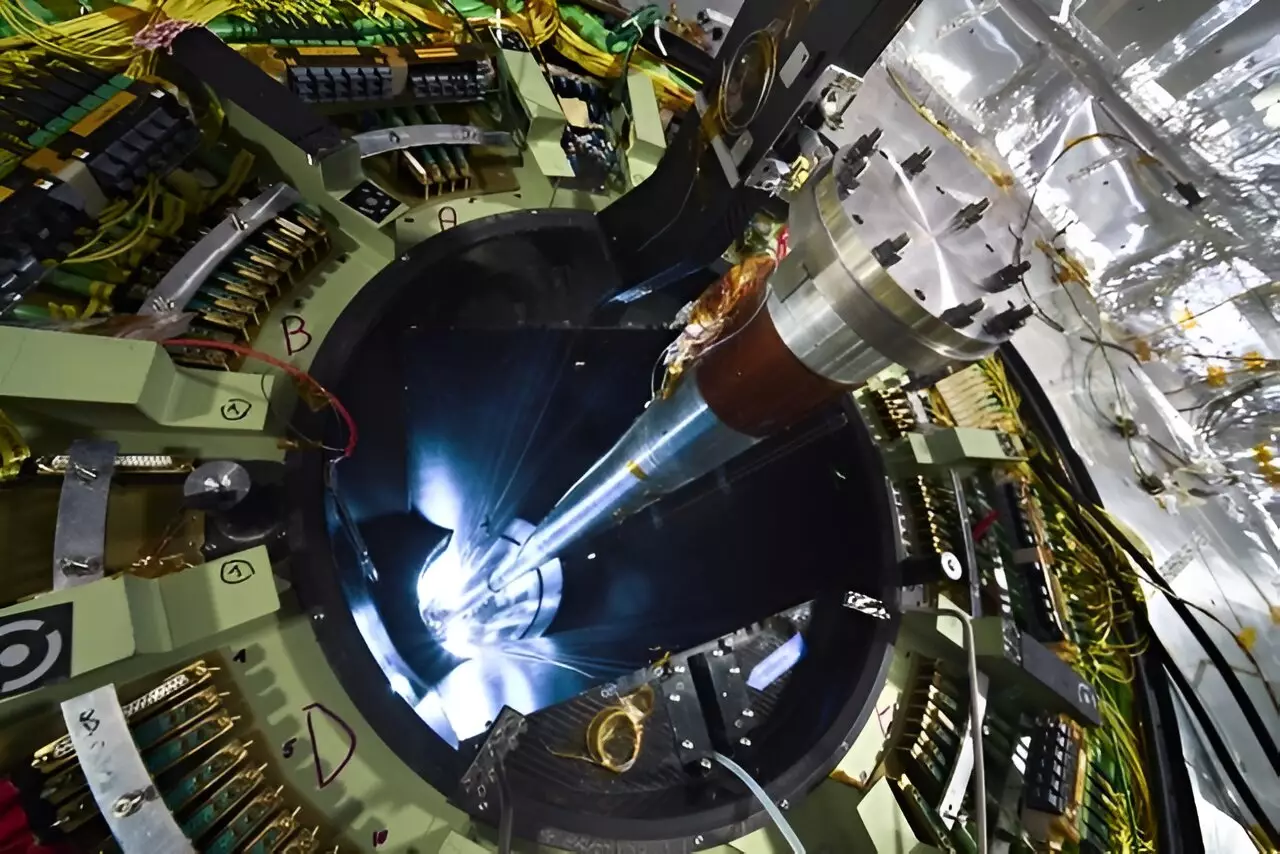Recent advancements in the field of particle physics have brought scientists closer to understanding one of its most perplexing puzzles: the existence of magnetic monopoles. A collaborative study involving researchers from the University of Nottingham and an international team has utilized a decommissioned section of beam pipe from the Large Hadron Collider (LHC) at CERN to probe this tantalizing question. Their findings, published in the prestigious journal *Physical Review Letters*, deliver the most stringent constraints to date on the existence of these hypothetical particles, which are theorized to be solitary magnets that possess only a single magnetic pole.
The concept of magnetic monopoles has fascinated physicists since it was first proposed by notable scientists, including Pierre Curie, Paul Dirac, and Joseph Polchinski. These characters have inspired a myriad of theoretical frameworks, yet despite various experimental attempts, elusive magnetic monopoles have mostly evaded detection. Oliver Gould, the lead theorist of the recent study, encapsulates the intrigue surrounding these particles: “Could there be particles with only a single magnetic pole, either north or south?” His query underscores the transformative potential that confirming the existence of magnetic monopoles could hold for our understanding of fundamental physics.
The team’s investigative journey commenced with a careful analysis of a segment of beryllium beam pipe from the LHC, which had previously been positioned at the particle collision point for the Compact Muon Solenoid (CMS) experiment. The design of this study is particularly noteworthy; the beam pipe had been exposed to radiation resultant from countless ultra-high-energy ion collisions. This exposure rendered the pipe a potential treasure trove for the research team focused on uncovering magnetic monopoles.
As outlined by Aditya Upreti, a Ph.D. candidate and the spearhead of the experimental analysis, the rationale behind utilizing this decommissioned beam pipe was strategic: the proximity of the material to intense collision points provided *a unique opportunity to probe monopoles with unprecedentedly high magnetic charges*. The researchers were specifically keen on exploring the implications of the Schwinger mechanism, which posits the spontaneous creation of charged particles, such as magnetic monopoles, under extraordinarily strong electromagnetic fields reminiscent of those produced in heavy ion collisions within the LHC.
With their experimental design set in motion, the MoEDAL collaboration employed a superconductive magnetometer to scrutinize the beam pipe for evidence of trapped magnetic charges indicative of monopoles. Despite their rigorous analysis and extensive data collection, the researchers did not uncover the presence of any magnetic monopoles. However, the significant outcomes of their study revealed constraints that indirect implications about monopoles, particularly excluding the existence of particles lighter than 80 GeV/c^2. In essence, their work has established new bounds for the search of magnetic charges, varying between two to 45 base units.
Gould remarks that while not the definitive answer physicists had hoped for, these constraints are invaluable for guiding future searches for magnetic monopoles. The absence of detected monopoles leads the researchers to consider their next steps: an extension of their inquiry to later runs of the LHC, which operated at higher energies than the initial experimental setups. “The beam pipe that we used was from the first run of the Large Hadron Collider, which was carried out before 2013 and at lower energies. Extending the study to a more recent run at higher energies could double our experimental reach,” Gould explains.
Implications and Future Directions
The increasing precision afforded by current experimental physics techniques and the imaginative application of existing resources—such as the mentioned beam pipe—underlines the dynamism in the domain of fundamental particle research. The drive to resolve the mystery of magnetic monopoles, whether they exist or not, continues to spur scientific inquiry, dedicated collaboration, and rigorous experimentation.
With pioneering experiments pushing the limits of our current understanding and technological capabilities, the search for magnetic monopoles stands as a testament to the tenacity and innovative spirit of the physics community. The landscape of particle physics remains a complex tapestry—woven with the hopes of answering not just the question of magnetic monopoles, but of potentially revolutionizing our understanding of the very fabric of the universe. These ongoing investigations will not only shed light on the mysterious nature of magnetic charges but also keep the flame of theoretical physics alive, inspiring future generations of scientists to delve deeper into the enigmatic world of particles yet to be discovered.


Leave a Reply